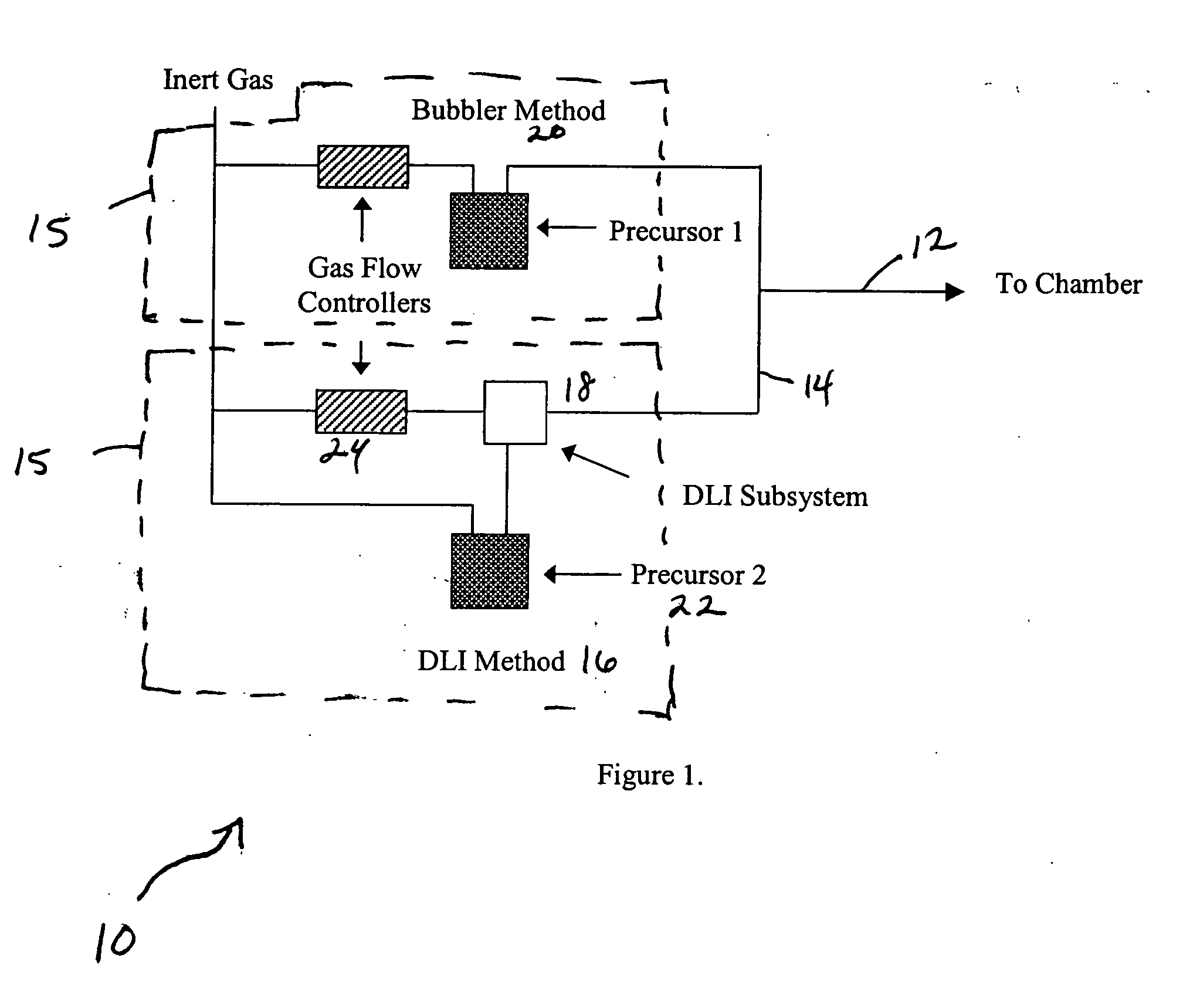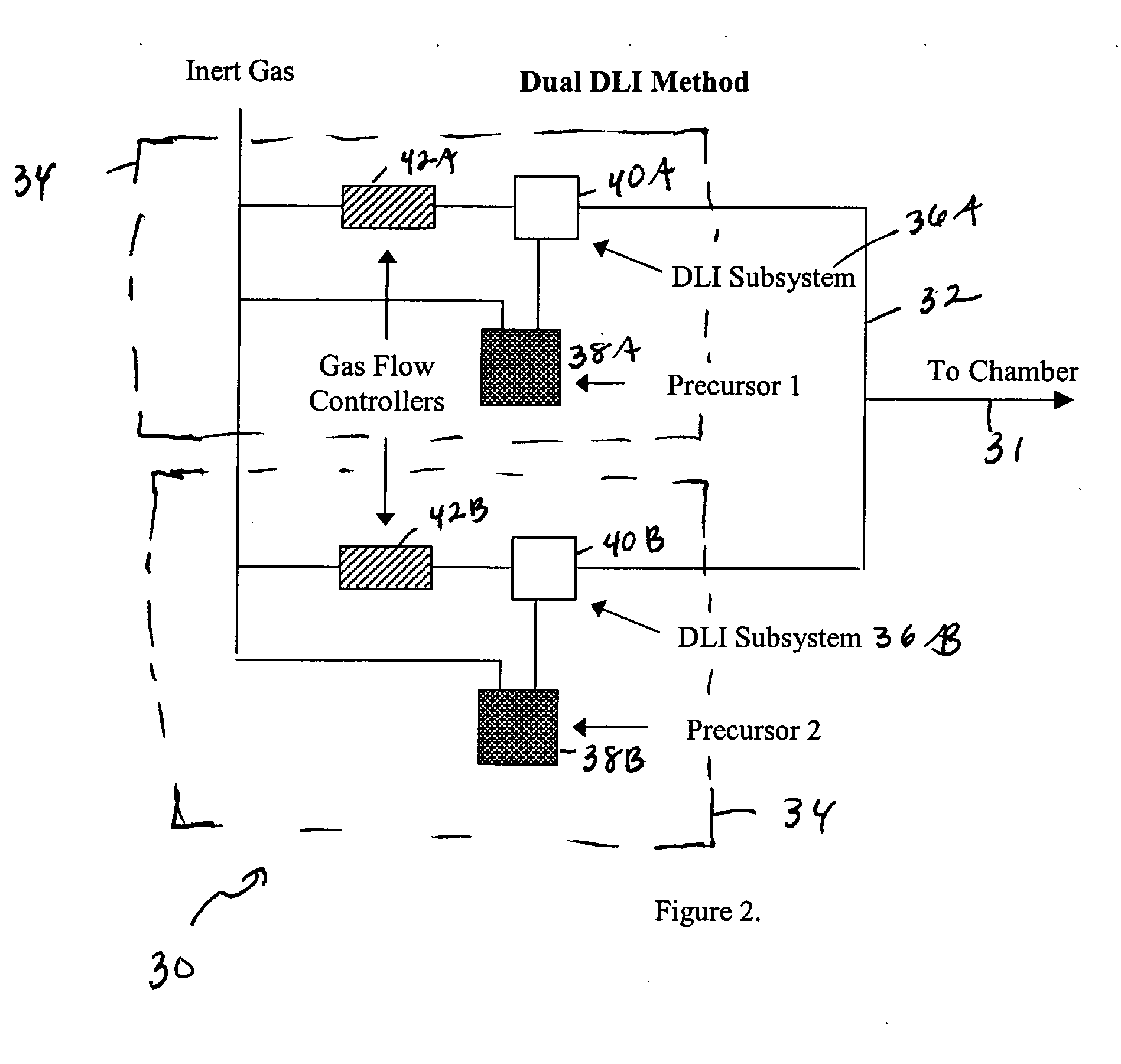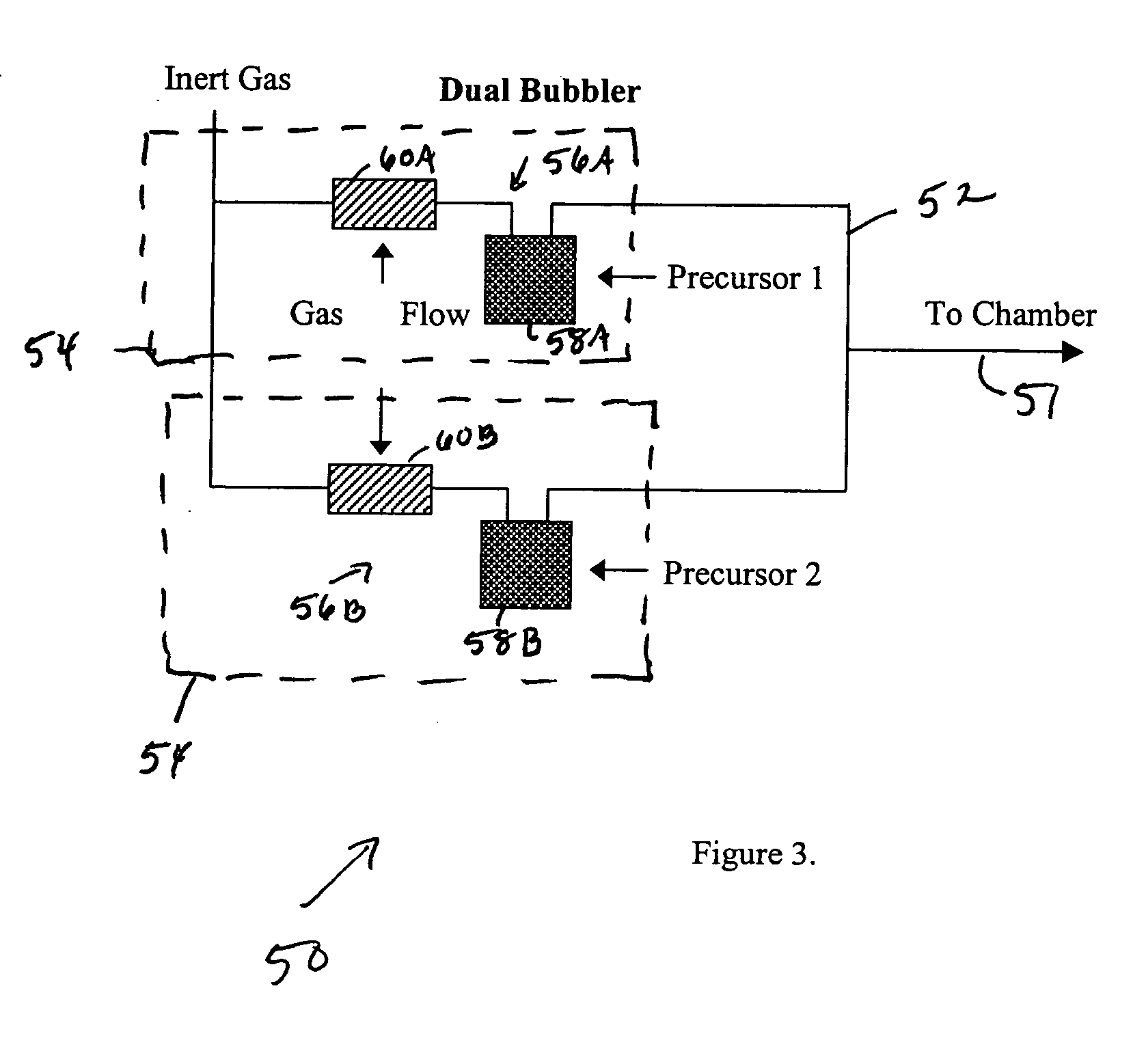Direct liquid injection system and method for forming multi-component dielectric films
a dielectric film and liquid injection system technology, applied in the direction of chemically reactive gases, coatings, crystal growth processes, etc., can solve the problems of increasing power dissipation, current leakage, chemical and thermal instability of materials on silicon,
- Summary
- Abstract
- Description
- Claims
- Application Information
AI Technical Summary
Benefits of technology
Problems solved by technology
Method used
Image
Examples
Embodiment Construction
[0023] In general, the inventor has discovered a method that provides for mixing precursors such that a mixture of precursors are present in a chamber during a single pulse step in an atomic layer deposition (ALD) process to form a monolayer having multiple chemical compounds on the surface of a substrate. The precursors are comprised of different chemical components, and such components will form the multi-component film. Such a method is a departure from the prior art, where the vaporized precursors are conveyed or pulsed separately into the chamber in the ALD process. A variety of multi-component films may be formed by the present invention, including but not limited to: metal, metal alloy, mixed metal oxides, silicates, nitrides, oxynitrides, and mixtures thereof.
[0024] In one aspect, the present invention provides a system and method for reproducibly and substantially uniformly controlling the stoichiometric composition of a multi-component film.
[0025] In a series of embodime...
PUM
| Property | Measurement | Unit |
|---|---|---|
| pressure | aaaaa | aaaaa |
| diameter | aaaaa | aaaaa |
| diameter | aaaaa | aaaaa |
Abstract
Description
Claims
Application Information
 Login to View More
Login to View More - R&D
- Intellectual Property
- Life Sciences
- Materials
- Tech Scout
- Unparalleled Data Quality
- Higher Quality Content
- 60% Fewer Hallucinations
Browse by: Latest US Patents, China's latest patents, Technical Efficacy Thesaurus, Application Domain, Technology Topic, Popular Technical Reports.
© 2025 PatSnap. All rights reserved.Legal|Privacy policy|Modern Slavery Act Transparency Statement|Sitemap|About US| Contact US: help@patsnap.com



